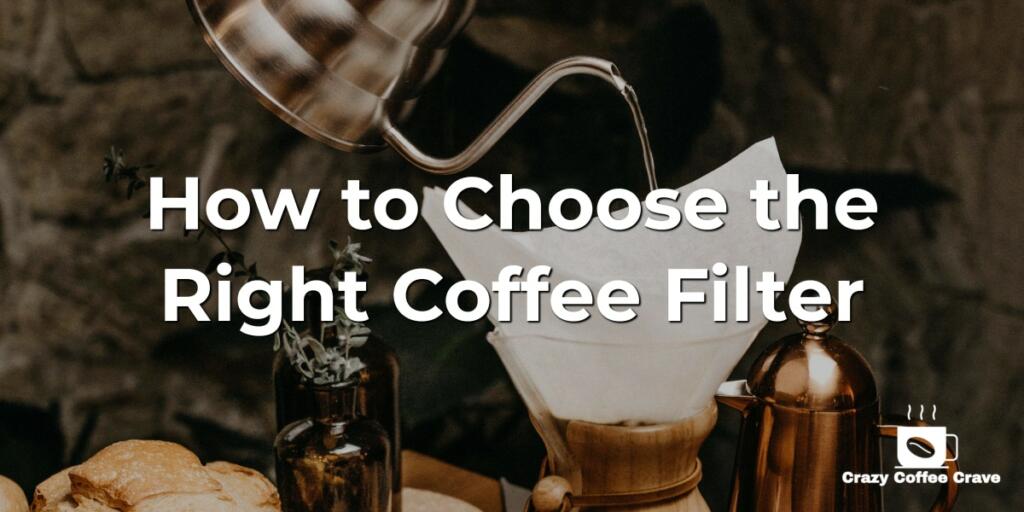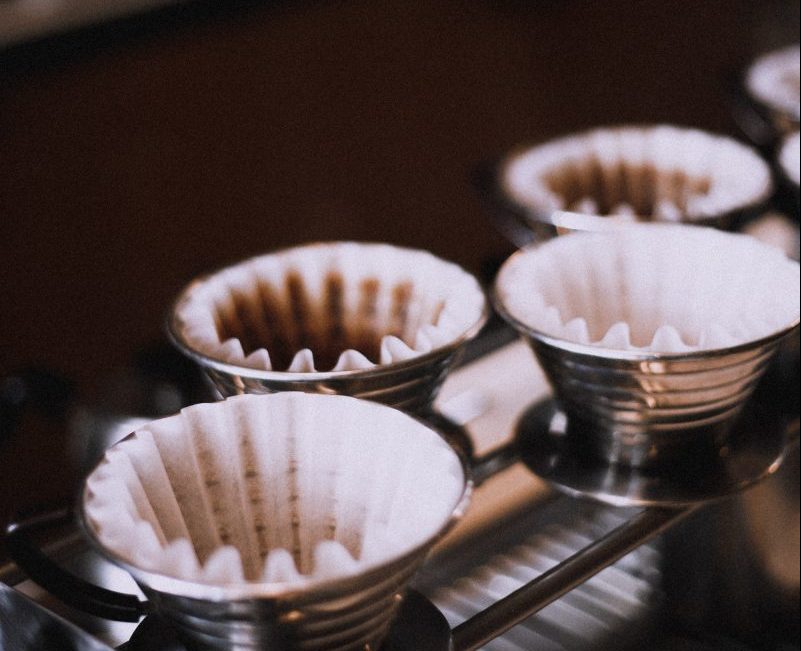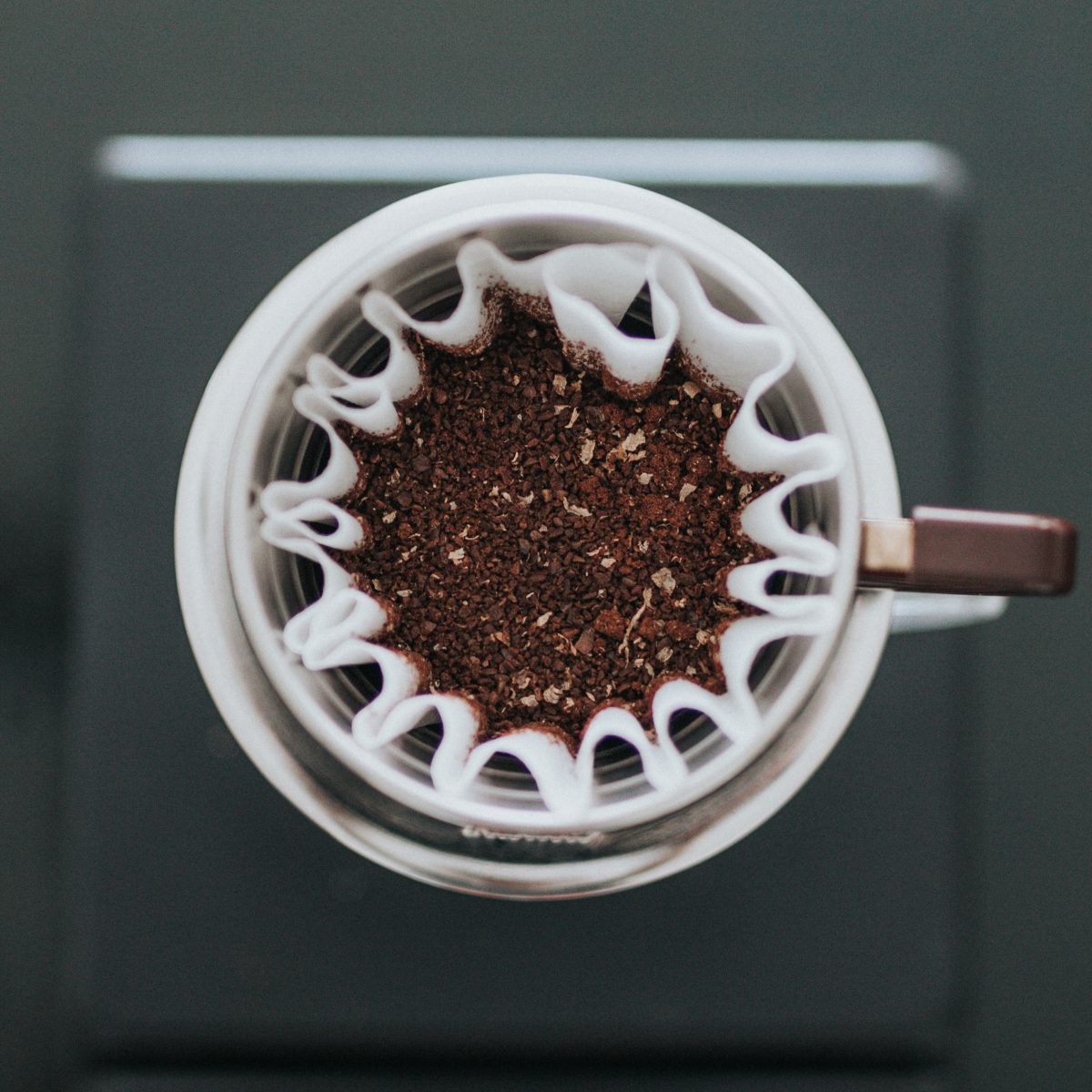What is the right coffee filter? Choosing the right coffee filter can be confusing, especially when you have little or no information about the various coffee filters on the market. From metal to bleached filters, you may be unable to pick the right one.
But don’t worry because we have you covered. This guide takes you through everything you need to know about choosing the right coffee filter. So, make sure to read it to the very end.

Bleached vs. Unbleached

There are many bleached and unbleached coffee filters in the market. But is there a difference between them?
Bleached filters
These papers have undergone a bleaching process that makes them appear white. Two products are used in the bleaching process. That is, oxygen and chlorine.
Chlorine is used to whiten the filters, but it does not do an excellent job compared to oxygen. Using oxygen results in high-quality bleached coffee filters. So, if looking for quality bleached coffee filters, then make sure to look for filters that are bleached using oxygen.
Unfortunately, bleached coffee filters are not friendly to the environment. They can pollute the environment when discarded, even though a small amount of bleach is used.
Oxygen-based tends to be the best as oxygen is much more environmentally friendly than chlorine.
Unbleached filters
Unbleached filters don’t have that bright look bleached filters have. They are a bit dark, more natural, and environmentally friendly. These filters don’t undergo any manufacturing process, which means when they break down, they are not as harmful to the environment as bleached filters.
For the best experience with unbleached coffee filters, mainly to avoid the taste of paper in your cup of coffee, consider doing the following:
- First, place your filter in your coffee maker.
- Next, pour a little water into it to wet the entire filter.
- Then, discard the water you used to wet the filter and brew your coffee.
If you follow these three steps all the time, you won’t be able to tell the difference between a cup of coffee made from a bleached filter and that made in an unbleached filter.

Taking into these considerations.

- Bleach does not affect the taste.
While many believe using bleached or unbleached is likely to hurt the taste of coffee, that is not true. The amount of bleach used is very low to impact the taste of your coffee or cause undesirable side effects.
- Quality is king
The quality of the filters you go for means a lot. You select the right ones and will surely enjoy a delicious cup of coffee. In addition, you save on your cents, and you will only have yourself to blame. Often thicker filters, although expensive, are the best because they don’t let water pass through fast. On the other hand, thinner filters are unsuitable as they let water through fast, hurting the brewing process.
- Cost
Now that you know quality is king, which filters are pocket-friendly? Bleached or unbleached? If you want to save a little money on your filters, the best bet is to pick filters bleached using a bit thicker oxygen. But if you want to remain environmentally friendly, choose unbleached filters. Remember that you will pay more if you go for unbleached filters.
So, which one is best?

Honestly, there is no clear winner between bleached and unbleached coffee filters. Both are great and will yield a delicious cup of coffee. Bleached filters undergo a manufacturing process, but the bleach in them does not impact your precious liquid. Unbleached filters, on the other hand, are environmentally friendly.
If you pick the right size and the correct thickness, you can rest assured of enjoying great cups of delicious coffee all the time.
Paper vs. Metal
Which filter will get the job done? Paper or metal? There is much debate about these two filters in the coffee world. Some recommend paper filters, while others go for metal filters. So, which is the best option? To help you decide which filter is suitable, we ask you a few questions.
- Which coffee filters cost more?
Metal filters are a bit expensive compared to paper filters but are worth an investment if you are a big coffee drinker. Paper filters are cheap, but you must keep buying them. If you want to save more in the long run, it is best to use metal filters.
- What about the environment?
If you are concerned about mother earth, by all means, go for metal filters. They are not only recyclable but also last longer. Here, metal filters are the obvious winner.
- Which coffee filter is easier to clean?
While this can be subjective, a paper filter is an obvious winner. Why? You simply lift the filter out and discard it. However, when it comes to a metal filter, you must dump it before rinsing it after each pot. Additionally, you must put it through cleaning cycles in your dishwasher or sink to ensure it is always ready for use.
- Which one is better?
If you are concerned about your health, paper filters are the best. Experts say they remove cafestol, an oil known for raising cholesterol levels.
However, some concerns are that the bleach in paper filters may get into your coffee. If worried about bleach in your coffee, consider switching to unbleached paper filters.
If you choose metal filters, you don’t have to worry about bleaching agents finding their way to your cup of coffee.
- Will the type of coffee filter affect the taste?
Metal and paper filters will produce coffee that tastes very different from one another. This could impact which one you go for. In addition, metal filters don’t remove as much of the cafestol from coffee as paper filters do. This means more oil ends up in your coffee; hence, you get a much bolder and richer coffee than with a paper filter. So, if thirsting for a fuller body cup of coffee with a bold flavor, metal filters are a sure bet.
On the other hand, paper filters remove much of the cafestol resulting in a much brighter flavored drink that is much lighter in the body. Many drinkers prefer this taste. You may also want to be careful with paper filters as your coffee can taste paper. The best solution to this is rinsing filters with hot water first.
The bottom line is to go for metal filters if you are thirsty for a much bolder cup of coffee and are not worried about what is filtered. On the other hand, buy paper filters if you are worried about what is filtered and prefer a lighter cup of coffee that is much brighter in taste.
Things to consider

The shape of your filter
- Conical
The types of filters tend to be the favorite among more dedicated homebrewers. There are available in two basic types. One is shaped like a standard cone, and the other has a round opening with two sides that taper into a shorter line.
The one shaped like a standard cone is primarily used for manual brewing tools, while the other is commonly adopted by permanent filters designed for automatic brewers. However, both filters get the job done.
- Basket
Also known as flat-bottom filters or cupcakes, these filters are either shaped like buckets with smooth edges or cupcake liners with a fold around the sides.
Note that the openings at the top basket filters can be larger than the surface area at the bottom, but the difference is not nearly as extreme as conical filters.
- Disk
Disk filters are commonly used for AeroPresses as a replacement or alternative for the French Press filters. However, the disk filters are smaller than the other filters and do not follow the standard sizing rules.
Cone vs. Basket

Which is the best option for you?
Cone filters are the obvious winner. Why?
They have a narrow bottom, unlike the basket filters, which have a wide flat bottom. The narrow bottom in cone filters prevents coffee grounds from spreading, guaranteeing even extraction. In addition, conical filters force hot water to travel through the coffee ground more effectively. For this reason, cone filters tend to be more expensive and worth your money.
What about sizes?
Often bucket filters are sold in 8 – 12 size filters. However, when it comes to conical filters, different standards come in #1, #2, #4, and #6. These numbers represent the tools you can use the filter with. Here is how it works:
- #1 Size Filter: For one-cup coffeemakers (both electric and non-electric)
- #2 Size Filter: For 2 to 6 cup electric coffeemakers or 1-2 non-electric coffeemakers
- #4 Size Filter: For 8-10 cup non-electric coffeemakers or 8-12 cup electric coffeemakers
- #6 Size Filter: For Fits 10+ cup pour-overs/ non-electric coffee maker
Often, #2 and #4 are the most common sizes as they cover the brewing needs of most people.
Your Coffee Brewing Method
Most coffee makers come with coffee filters and, in most cases, metal filters. However, some let you order one instead of using a paper filter, and some don’t make metal filters for their machines like pour-over systems. Doing your homework in advance can help you avoid such brewers.
Whether you go for a paper filter or a metal one depends on your taste. We recommend you try both and then pick one that works best for you.
Best metal coffee filters
Barista Warrior Gold Conical Filter
This titanium-coated stainless steel with a no-slip silicon ring at the top work well with Chemex or Hario V60 pour-over makers or anything else with a similar shape. It uses a dual-layer filtration system and is suitable for a full-bodied cup of coffee because it lets through plenty of oils.
The brand comes with a six months warranty meaning you can take your filters back if you are not happy but before the six months elapses.
The Ovalware Conical filter is yet another excellent alternative to the Barista warrior. It has a similar make and compatibility and is available in Gold and Titanium coffer. It is slightly cheaper and comes with a 90-day manufacturer guarantee.
EZWay Gold-Tone Universal Coffee Filter
This stainless-steel reusable coffee filter is ovular and stretchable. One reason why it stands out is that it is universal. You can use it across different brewers comfortably. While it is marketed for 6 – 8 cup brewers, it is better around the 6 – 8 cup mark.
NRP Steel Gold-tone Taller #4 Permanent Coffee Filter 12cup
This coffee filter is more rectangular on the sides with a V-shape at either end. The design is probably because the filter is intended for 12-cup coffee makers such as Delonghi BCO series, Capresso coffee makers, Kenmore coffee makers, Krups SAVOY coffee makers, and more.
It is designed for automatic brewers, lasts longer, is dishwasher friendly, and is probably of the most versatile filters of this style as far as its compatibility.
Other reusable filters: Best reusable fabric filters
Organic Hemp Square Coffee Filter
Tired of paper and cloth filters? Hemp filters are the best option. They are designed from plants that require less water to grow and that are stronger than cotton. They allow some oil to pass through but not as much as metal filters. Besides, you get the level of sediment filtration as a paper filter.
It is easy to clean. Just rinse it with some hot water and air dry. It comes in #2, #4, Chemex, and Cold Brew styles.
Best reusable flat (Aeropress) filter: Corretto stainless steel filter set
Do you have an Aeropress? Try the Corretto stainless steel filter set. The set comes in 3 Corretto filters, which are a great option when focused on reducing your waste. The pack includes a mesh, ultra-fine, and fine filter option, meaning that you can achieve anything from the typical, ultra-clean cup to a more full-bodied brew. Of course, you can also buy these filters separately.
If also more focused on buying a product with low-waste packaging, you can try Able DISK. Able DISK is made in the USA by Able Brewing.
Best Reusable Pod Filter: iPartsPlusMore Gold Plated Mesh Filters
These environmentally friendly and reusable pods ensure you enjoy a better and fresher cup of coffee daily. They are compatible with both 1.0 and 2.0 Keurig makers. Its mesh, which is stainless steel, works well to cut out sediments. Not forgetting that pink-purple plastic is BPA-free.
If you are a Keurig diehard, you can opt for the My K-Cup. It is affordable, has more moving parts, and was designed by and for Keurig.
Conclusion
It is never an easy task to choose the right coffee filter. But, we know it and have done all the heavy lifting for you. Hopefully, this guide was helpful. Need more information about coffee filters? Don’t hesitate to ask?
Disclaimer: This post contains affiliate links, which means I may receive a small commission, at no extra cost to you, if you make a purchase using these links. Remember to support us by purchasing through the Amazon/Walmart/Impact Radius links provided. Last update on 2024-04-19 / Affiliate links / Images from Amazon Product Advertising API
Disclosure: No compensation or free products were received in exchange for writing this review.

Editorial Staff
The editorial staff at Crazy Coffee Crave is a team of coffee enthusiasts & Baristas who enjoy the one thing we all think about as soon as we get up in the morning. Trusted by thousands of readers worldwide.













